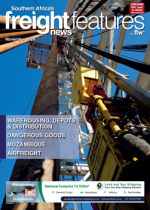The logistics industry in Mozambique is set for significant growth, especially as more projects come online. According to Andreas Kusza, senior management advisor at Manica, the company has already experienced a surge in activity, driven by port developments across the country that are boosting transit cargo volumes. “There’s a significant increase in transit cargo, with a lot of commodities from South Africa now finding their way through Maputo,” he told Freight News. The growth is bolstered by a substantial investment drive in port infrastructure, which he believes will have long-term benefits for the logistics sector. “Geographically, it makes sense to use Mozambique, given its strategic position along the southeastern coast. It is a natural gateway for regional and international trade, particularly for landlocked neighbouring countries seeking efficient routes to global markets."Kusza highlighted that the anticipated revival of the onshore LNG project at Afungi by Total was a key focus for the logistics industry. “While teams are on-site and preparatory work is under way, the situation remains uncertain until the force majeure is lifted – it’s still very much a waiting game,” Kusza explained. In the meantime, Pemba port is expected to see a significant increase in activity as companies choose barging over the still riskier overland routes.The logistics sector is also closely monitoring developments in other major projects, such as the Temane projects. The LPG production project is 92% complete and aims to convert Mozambique's reliance on charcoal to LPG gas. The 400-MW gas-fired power plant project is still under construction. Additionally, the first wind park in Namaacha is in the final planning stages, and a new 1.2-gigawatt gas-fired power plant in Matola is set to commence, with a regasification unit to be installed. Renewable energy projects are also increasing across the country. While the Guambe solar power plant has just been commissioned, several more are in the pipeline. EDM embarked on a significant upgrading of grid and distribution capacities in view of the 2030 southern African grid interconnection. While the EPC has not been announced yet for the Naamacha wind park, this project could see as many as 30-40 wind turbines go up. There are also massive hydropower projects such as the one planned for Mphanda Nkuwa that bode well for the logistics sector.Kusza said it was not just projects but also an increase in mineral volumes that was positive. “We are seeing more graphite movements with substantial reserves in the country, while there has been an increase in the volumes of lithium moving out of Zimbabwe in particular.”Corridors like Beira that connect Zambia and the DRC to the eastern seaboard remain busy, with the demand for critical minerals increasing globally. Asked about challenges, Kusza pointed out that infrastructure, such as inadequate road and bridge capacity, remained significant hurdles. “Moving heavy equipment is difficult due to the condition of roads, and the bridges have very limited capacity,” he said.

